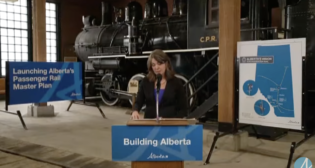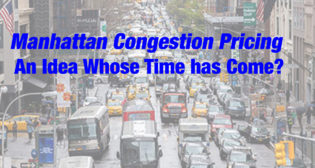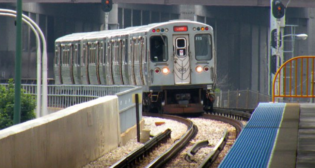
Transit Briefs: Metrolinx, NYMTA, SEPTA
Written by Carolina Worrell, Senior Editor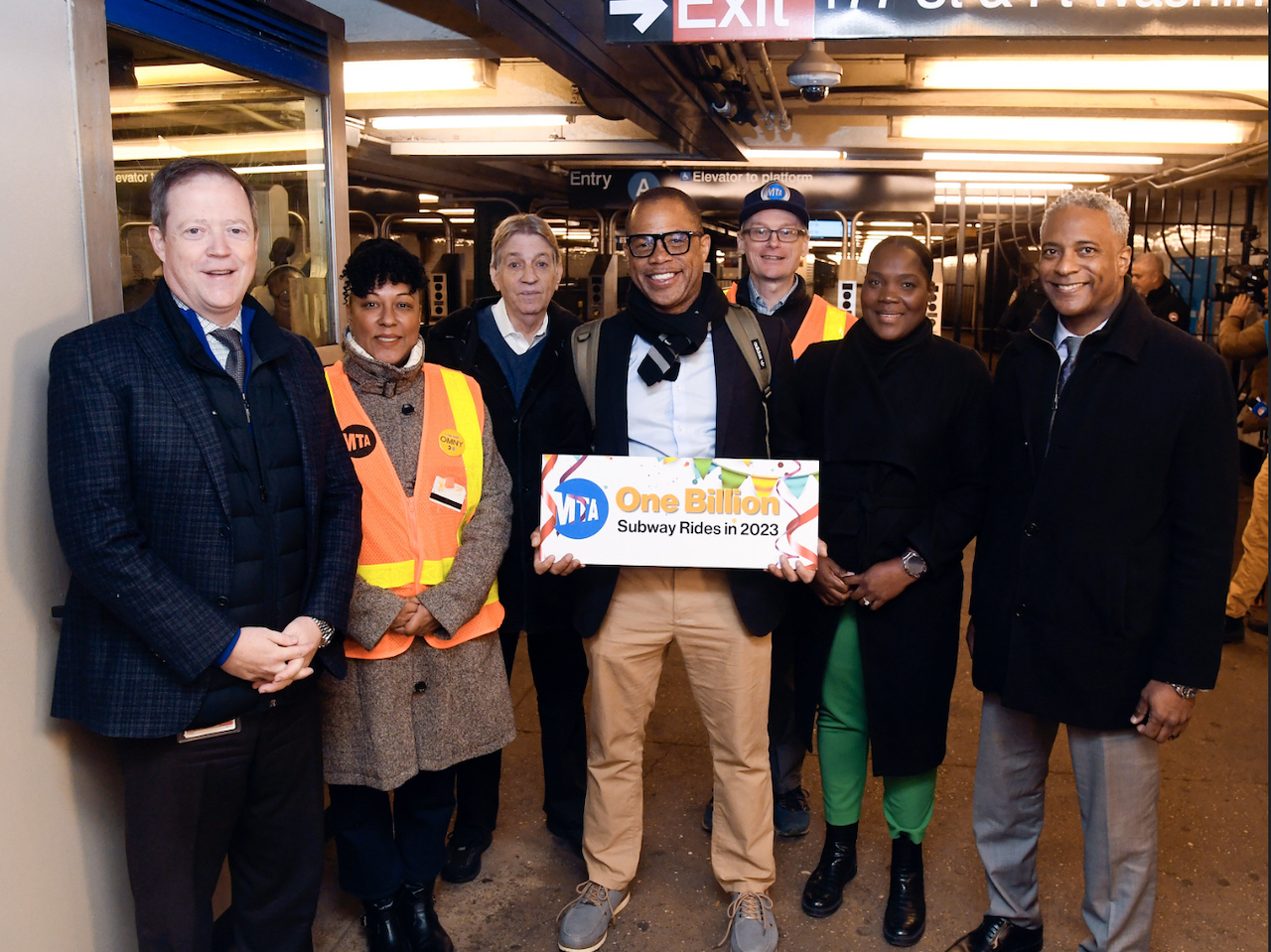
NYMTA photo
Metrolinx makes its PRESTO card available in Google Wallet. Also, the New York Metropolitan Transportation Authority (NYMTA) announces that the New York City subway has hit one billion rides this year; and the Southeastern Pennsylvania Transportation Authority (SEPTA) will introduce a new name and look to its rail system in 2024.
Metrolinx
Beginning Nov. 14, PRESTO in Google Wallet, a digital version of the PRESTO card that can be used on an Android smartphone or Wear OS smartwatch is now available to pay for fare on Metrolinx’s GO Transit, UP Express, Brampton Transit, Burlington Transit, Durham Region Transit, Hamilton Street Railway, MiWay, Oakville Transit, Toronto Transit Commission (TTC) and York Region Transit.
According to Metrolinx, PRESTO in Google Wallet offers customers the following new features:
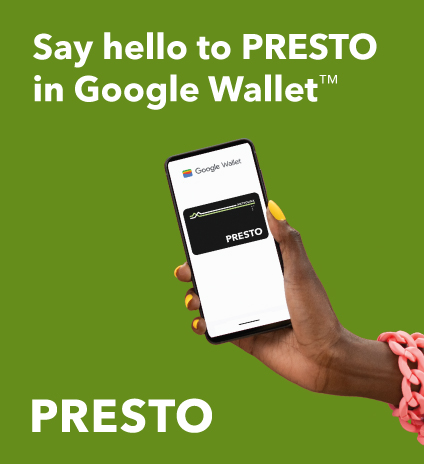
- “Fare convenience. Pay your transit fare with a PRESTO card on your Android smartphone or Wear OS smartwatch.
- “Instant changes. Use the PRESTO App to make changes instantly, including loading funds to your PRESTO in Google Wallet from anywhere.
- “Fare discounts. When you convert your physical PRESTO card to PRESTO in Google Wallet, your fare type goes with you. This includes fare discounts for youth, post-secondary students and seniors.
- “Multiple fare types. Set multiple fare types if you qualify for more than one discount (for example you could have a universal senior discount and a transit-agency specific discount).
- “Transaction history. Access to three months of your transaction history in the PRESTO App.
- “And with the Google Wallet, the PRESTO card costs $0 instead of $4 for the physical card.”
Earlier this year, Metrolinx expanded the option to tap credit and debit cards, including those cards on smartphones and smartwatches, to pay the adult fare on all PRESTO participating transit agencies throughout the Greater Toronto and Hamilton Area, including the TTC.
Combined with the new PRESTO in Google Wallet option, the transit agency says it is “transforming the way people pay for transit fares.”
Metrolinx is working to add support for other mobile wallet platforms in the future. More information is available here.
NYMTA
The New York MTA on Nov. 14 announced that it has hit one billion trips on the New York City subway in 2023.
The billionth customer was identified as Brian Jones from Teaneck, N.J. (pictured below), who tapped into the subway system at the 175th Street A station at 10:54 a.m. This milestone comes six weeks earlier than last year, when the subway reached one billion rides on Dec. 27.
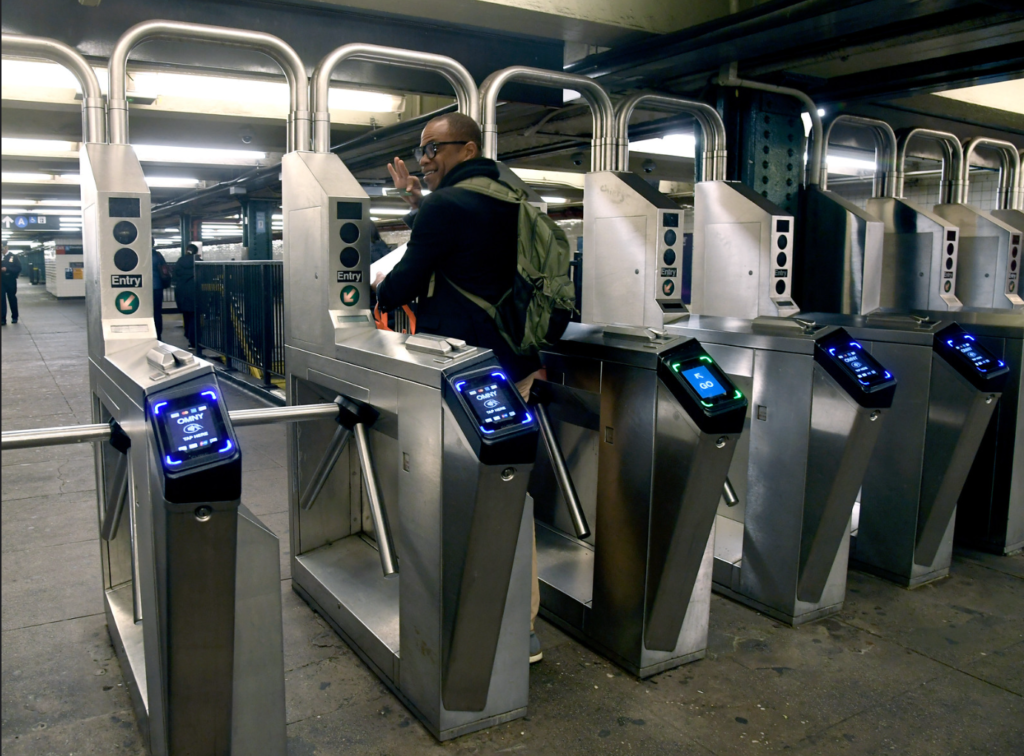
“This has kind of been a reintroduction to the subway for me,” said Jones. “Just took a new role here in New York, I had been working virtually for the last three years, and so was great to return on the tail end of that gap and to see that I can tap my debit card and walk right through the turnstile. I come from New Jersey, I can stop and have a cup of coffee in the terminal upstairs before I jump into my meetings, and so the subway has always been a part of my day and will continue to be a part of my day, and it’s great to experience these improvements as the journey continues.”
Jones received a $100 OMNY value card, OMNY t-shirt, New York City Transit (NYCT) map glasses cleaner and an OMNY button.
Subway ridership, MTA says, continues to grow in 2023. Last week, more than 23 million subway rides were taken, an 8% increase from the same week in 2022.
According to the agency, MTA’s OMNY fare-payment system also experienced usage growth in 2023, reaching one billion taps on July 26. OMNY market share of full-fare subway rides is now above 73%.
Customers are expressing their approval of OMNY, giving it a 79% satisfaction rate in the latest Spring 2023 Customers Count Survey. Customers have tapped into all 472 subway stations and boarded 204 local bus routes and 31 express buses. Of the 195 countries that issue bank cards, OMNY has processed a card from every single one of them.
OMNY also supports Reduced-Fare customers who are ready to use their smart device, or contactless bank card to tap and go. Reduced-Fare customers are encouraged to seamlessly make the switch from MetroCards online with the OMNY digital assistant, which is available 24/7 at OMNY.info.
SEPTA
SEPTA is introducing a new name and look to its rail lines in 2024 with a project that “aims to take the guesswork out of how to use the Philadelphia region’s public transportation system,” according to a CBS News report.
Work on the project, the SEPTA Metro Wayfinding System, “a comprehensive redesign aimed at making SEPTA more accessible and user-friendly for riders on its Broad Street, Market-Frankford, Media-Sharon Hill, Norristown High Speed and trolley lines,” is expected to begin next summer, starting with the 15th Street City Hall transit station, according to a PhillyVoice report.
“We’ve been working on this project for a few years… it really kicked off in the beginning of 2020,” said SEPTA Director of Information and Design Lex Powers. “The focus on improving the rider experience has been a central theme since the tenure of General Manager Leslie Richards, with an emphasis on correctness, accessibility and consistency in static signage.”
According to the PhillyVoice report, SEPTA’s redesign “prioritizes colors, shapes, letters and numbers to ensure a universally understandable system.”
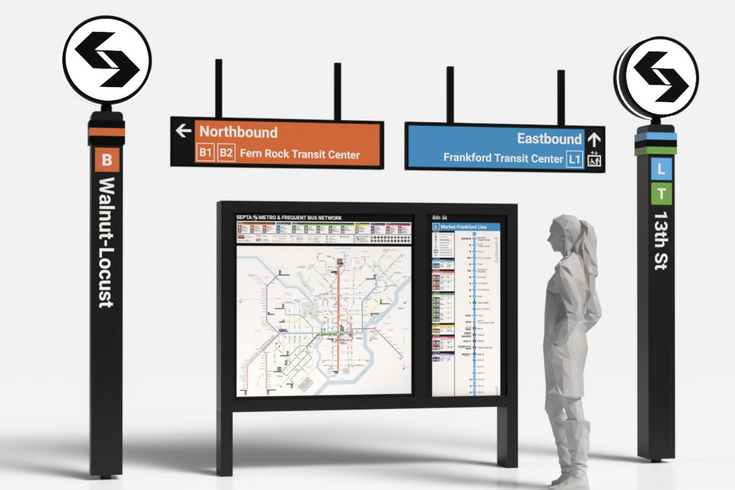
One aspect of the redesign, the PhillyVoice reports, involves adding a new term to SEPTA’s lexicon. “Metro,” one of three transit categories, will be an umbrella term that refers to the city’s Market-Frankford, Broad Street and trolley lines. (The other two SEPTA transit categories will be its bus network and Regional Rail lines.)
According to the report, another feature of the redesign is more consistent signage. “The Market-Frankford Line will be outfitted with blue signs marked with ‘L,’ the Broad Street Line will have orange signs marked with ‘B’ and the trolley lines will have green signs marked with ‘T.’ The only outliers will be the Route 15 trolley (currently a bus route that will revert to a trolley line soon), which will have yellow signs with a ‘G’ for Girard Avenue, the Media-Sharon Hill line, which will have pink signs with a ‘D’ for Delaware County and the Norristown High Speed Line, which will have purple signs with an ‘M’ for Montgomery County.”
Another change consists of updating duplicate station names, including the “L” and “B” lines, both of which have stations named “Girard.” These stations will be changed to “Front-Girard” and “Broad-Girard,” respectively.
SEPTA also will release a new app, along with new transit maps.
The redesign is the result of a study conducted by SEPTA in partnership with the University of Pennsylvania’s Center for Safe Mobility, which used “eye-tracking technology to evaluate how people navigate Philadelphia’s most confusing transit stations,” according to the PhillyVoice report.
According to the report, the study found that the transit system is “plagued by excessive wordiness, reliance on full sentences in signage, overuse of technical terms, inconsistency in station and line names, design disparities, signage placement issues, information overload, outdated data and the presence of multiple brands.”
“The Metro Wayfinding System’s phased approach, attention to user-friendly design and consideration for diverse user needs reflect SEPTA’s commitment to creating an inclusive and efficient public transportation experience,” Powers said.
